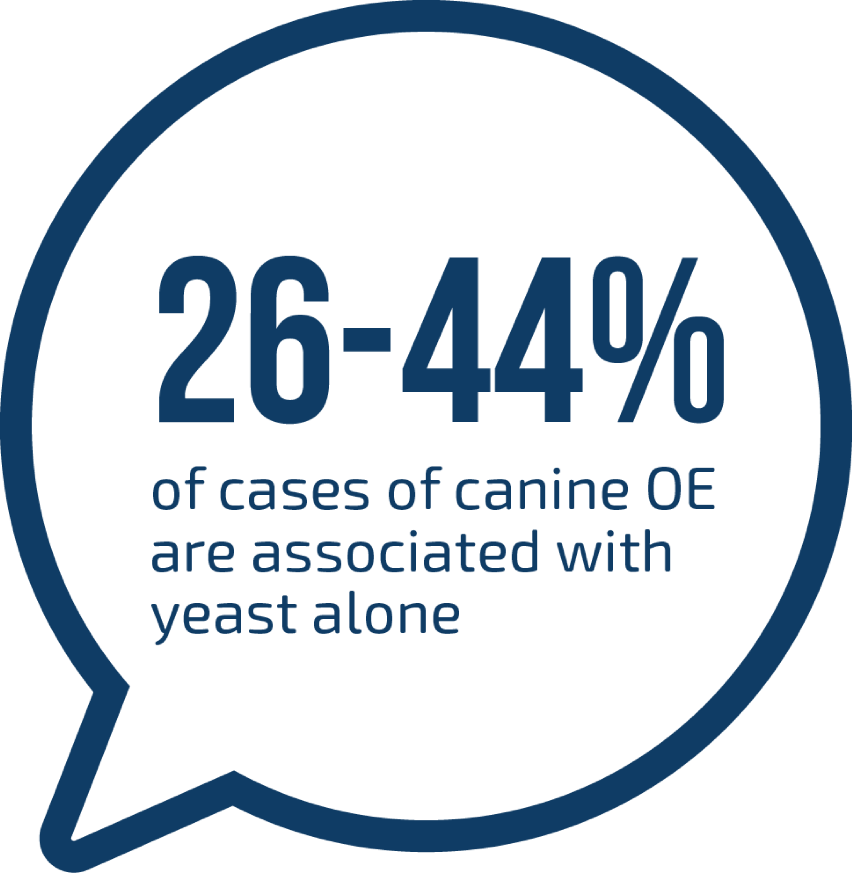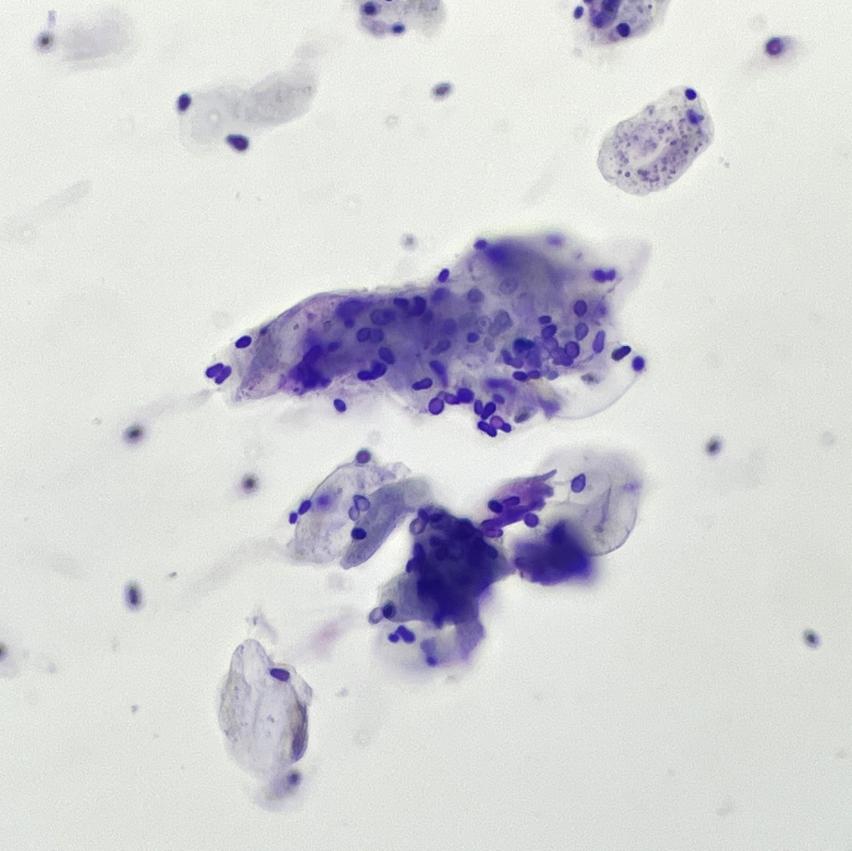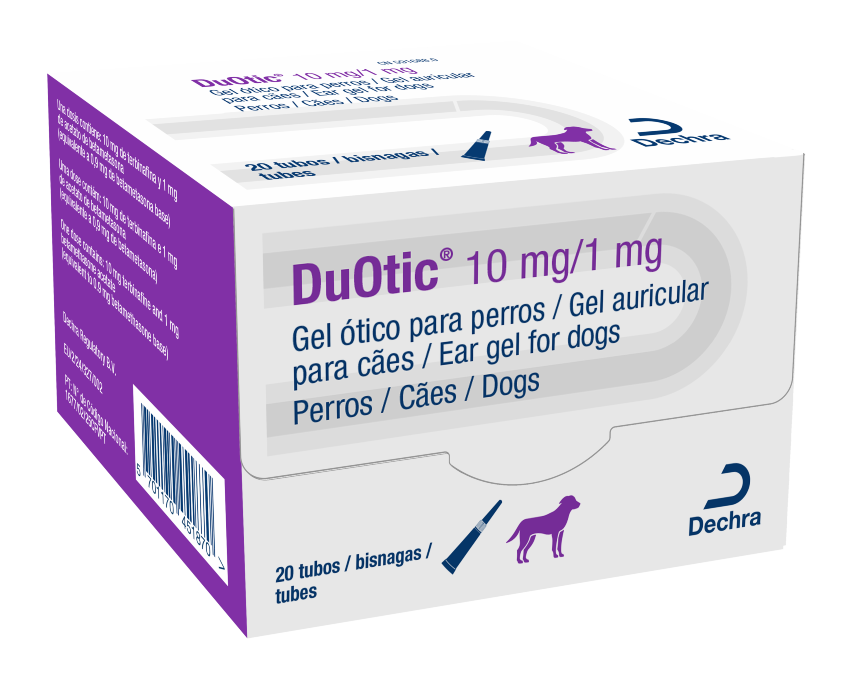- Bensignor, B. (2021) An approach to Otitis in BSAVA Manual of Canine and Feline Dermatology 4th ed. Gloucester, British Small Animal Veterinary Association 143-149
- Saridomichelakis, M., N., et al (2007) Aetiology of canine otitis externa: a retrospective study of 100 cases. Veterinary Dermatology 18(5): 341 – 347
- Zur, G., et al ( 2011 ) The association between the signalment common causes of canine otitis externa and pathogens. Journal of Small Animal Practice 52(5): 254 – 258
- King, S.B, et al, (2018) A randomized, controlled, single-blinded, multicenter evaluation of the efficacy and safety of a once weekly two dose otic gel containing florfenicol, terbinafine and betamethasone administered for the treatment of canine otitis externa. BMC Vet Res 14, 307
- Rigaut et al, (2023) Efficacy and safety of a hydrocortisone aceponate-containing ear spray solution in dogs with erythemato-ceruminous otitis externa: A randomised, multicentric, single-blinded, controlled trial. Veterinary Dermatology 00:1–9.
- Antimicrobial Resistance Collaborators (2022). Global burden of bacterial antimicrobial resistance in 2019: a systematic analysis. The Lancet; 399(10325): P629-655.
- European Medicines Agency (2023) European Surveillance of Veterinary Antimicrobial Consumption 'Sales of veterinary antimicrobial agents in 31 European countries in 2022' (EMA/299538/2023)
Yeast Only Canine Otitis Externa
Otitis externa (OE) is defined as an inflammatory condition that affects the external auditory canal, extending from the pinna to the tympanic membrane1.
Prevalence
How common is yeast otitis in dogs?
Clinical signs of head shaking, rubbing, itching, otalgia, and/or malodour are common with OE but can vary both in presentation and severity, depending on the type of OE present. In practice, although the physiological changes that occur as part of the inflammatory response (heat, redness, swelling) are important, it is the individual’s clinical response to this that leads to presentation.
Although OE is commonly associated with bacterial and/or fungal infections, they are only secondary in nature. It is an initial inflammation of the skin of the ear, most commonly due to allergy2,3, which changes the environment of the ear canal, promoting the overgrowth of otic commensals.
Malassezia pachydermatis is a commensal of the ear which is often implicated in cases of OE. Publications suggest that 26-44% of cases of canine OE are associated with yeast alone4,5.

Concerns
Why should I be concerned about yeast only OE?
Antimicrobial resistance (AMR) is one of the top global public health and development threats and AMR can spread from animals to people and vice versa.
A publication in the Lancet from 2022 reveals that bacterial AMR was directly responsible for 1.27 million and contributed to 4.95 million deaths in humans in 20196.
All veterinary professionals should be proud of their efforts to reduce unnecessary use of antibiotics and the annual European Surveillance of Veterinary Antimicrobial Consumption (ESVAC) reports positive results with significant reductions of overall usage7.
Although topically applied antibiotics are not as problematic as systemic, we should all do our best to reduce unnecessary use.
Diagnosis
How can I diagnose yeast only OE?
The workup for a case of acute otitis externa usually involves gathering an initial appropriate history and noting clinical signs, combined with compatible clinical examination, and otological and cytological findings, leading to a diagnosis.
However, with all OE workups, consideration should be given to the multifactorial aetiology. For best outcomes, the primary cause must be considered and addressed alongside secondary causes, predisposing, and perpetuating factors (commonly shortened to PSPP).
To differentiate yeast only OE from other types, special attention should be paid to ear cytology as it provides basic information on microbe growth and increases your chance of prescribing a more targeted treatment.

Treatment
How can I treat yeast only OE?
There are many options for treating otitis externa and there is no ‘best’ product for every case. To make an informed decision there are multiple factors to consider when choosing the most appropriate treatment including the degree of inflammation, nature of discharge, microbial overgrowth/infection, antimicrobial guidelines, and case specific circumstances regarding ease of administration or cost.
However, it is important to remember that yeast shouldn’t be treated with antibiotics. It may be that you consider using a targeted treatment combination for yeast only otitis externa in dogs which helps you reduce unnecessary use of antibiotics.

Summary
- Otitis externa (OE) in dogs is caused by an underlying inflammation, yeast proliferation/infection occurs secondary to this
- Publications suggest yeast only OE is common4,5
- Cytology is fundamental to the diagnosis of yeast OE
- Yeast only OE can be treated with targeted therapy which reduces unnecessary use of antibiotics
References add
